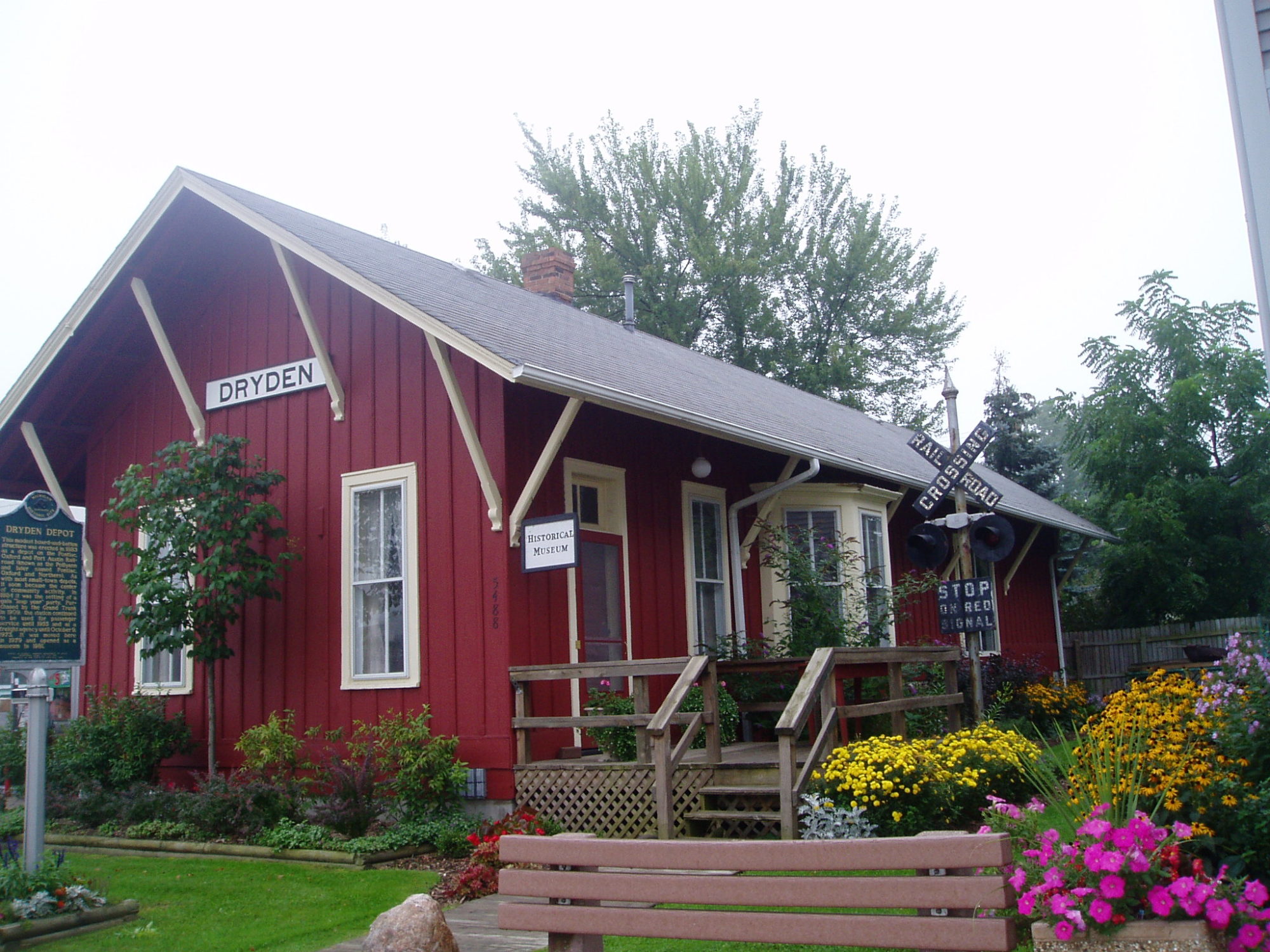By Clytie Manwaring Foot, circa 1947
The Village of Dryden was settled in 1836, one mile north of where it now stands and was called Amboy. The people did not like the name so petitioned the Legislature to change it to Lober but by some mistake it came out Lomond. This was more distasteful than Amboy, so they asked for Richmond but there were several towns in the state by that name so they had to choose another.
J.M. Lamb, state senator, asked Sanford Kendrick to choose one, so he chose Dryden in honor of the poet Dryden. The first house built in the village is the one Jay Ellis owns, the one second from Clarence Allen's store (2nd house next to present hardware, Carl Sterner's house) on the north east corner of Pleasant and Main Street.
The first store was built by Jonathan Sweet. It stood where the Ladies Library now stands. This property was purchased from Mr. Sweet by J.M. Lamb, and for several years they called it Lamb's Corners.

The first church was built in 1856 and the first minister was Abel Warren, Methodist. In the construction of the church, Benny Swain was killed; he was painting the steeple and fell, landing on the roof.
The first doctor was N.B. Eldridge; he came in 1844.
The first schoolhouse built (where Henry Eoff's house now stands on the corner of Atwell and Main). The first teacher was Henry Haines. In 1870, a second school house was built at a cost of $4000. It stood where the one now stands.
The first hotel was built by Baker. It stood where the bank building now stands. It was called Dryden Exchange. The second hotel was built in 1874 by Joseph Darwood. It is now converted into a hardware owned by F. Blow (where the IGA is now). This hotel was called Twin Elms because two trees just alike stood out in the road in front.
The first post office was run by John M. Lamb.
The first mill was built by Mr. Neiley on the southwest corner of Quigley lot. It burned, that is why the street is called Mill Street.
The Ladies Library was started in 1871. Their first building was where the fire house is now. Then in 1885 they built the building they now occupy for $1500.
